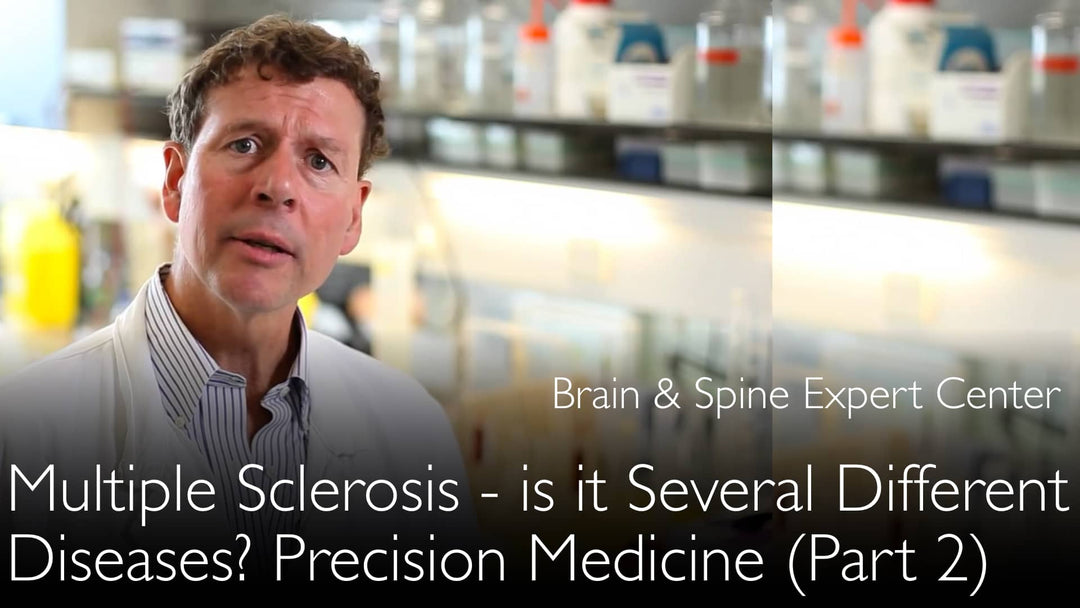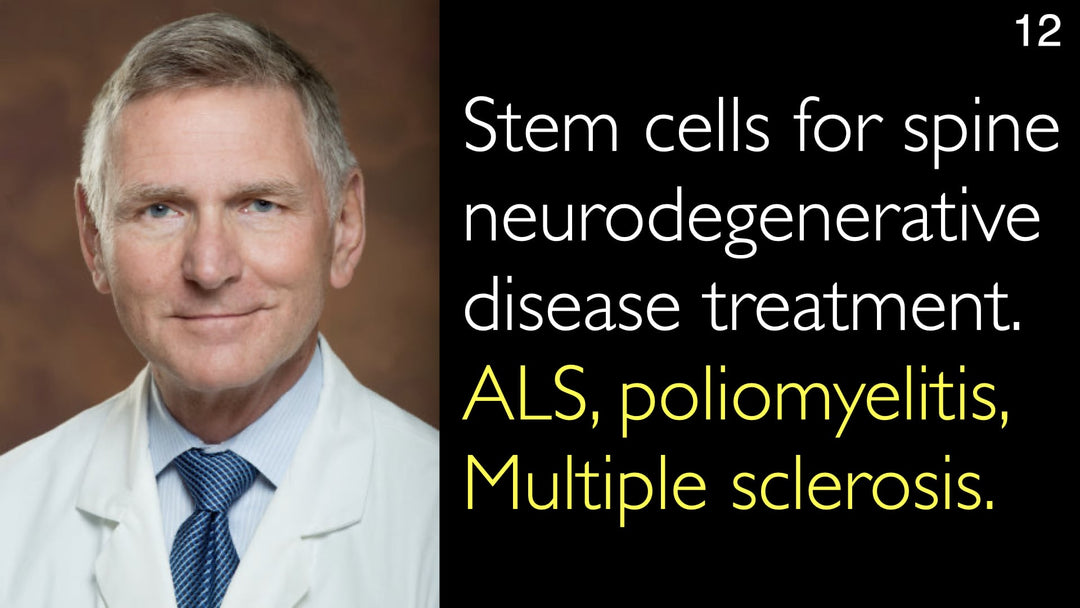Dr. Paul Matthews, a leading expert in multiple sclerosis and neuroimaging, explains how neuromyelitis optica (NMO) was redefined as a distinct disease separate from MS. He elaborates on the role of the aquaporin-4 antibody as a unifying biomarker. Dr. Matthews also discusses the complex path toward personalized MS treatment, which involves genetic, environmental, and MRI factors for patient stratification and therapy selection.
Forståelse af neuromyelitis optica og præcisionsmedicins fremtid for multipel sclerose
Spring til afsnit
- NMO: En separat sygdom
- Aquaporin-4-antistoffets rolle
- Genetiske faktorer i MS-prognose
- MR-scanning i præcisionsmedicin
- Personliggørelse af MS-terapi
- Fuld transskription
NMO: En separat sygdom
Dr. Paul Matthews, MD, præciserer, at neuromyelitis optica (NMO) nu anses for en specifik sygdomsenhed, adskilt fra multipel sclerose. Denne omklassificering er en stor succes for præcisionsmedicinen i neurologien. Arbejde fra Mayo Clinic og Oxford University viste, at et specifikt MS-lignende syndrom var unikt knyttet til et antistof, hvilket førte til dets adskillelse.
NMO har en anden prognose, reagerer anderledes på MS-medicin og forekommer i andre patientgrupper end klassisk MS. Dr. Paul Matthews, MD, bemærker, at der findes specifikke asiatiske og kaukasiske varianter af sygdommen, som nu forenes under denne nye forståelse.
Aquaporin-4-antistoffets rolle
Opdagelsen af Aquaporin-4-antistoffet var et vendepunkt. Dr. Paul Matthews, MD, forklarer, at dette antistof, som findes i blodserum, fungerer som en fælles biomarkør for NMO. Denne biomarkør gav et klart biologisk mål for forskning og diagnostik.
Identifikationen af antistoffet muliggjorde for forskere at udvikle dyremodeller af NMO. Dette har ført til en relativt præcis forståelse af sygdommens patofysiologi og bevæget os væk fra en symptombaseret klassifikation til en mekanismebaseret definition.
Genetiske faktorer i MS-prognose
For det bredere multipel sclerose-syndrom, der er tilbage, spiller genetiske faktorer en afgørende rolle for sygdomsalvor. Dr. Paul Matthews, MD, fremhæver HLA-genotypen, specifikt HLA 1501-haplotypen, som er forbundet med en mere aggressiv progression af MS.
At finde andre stærke genetiske markører er et centralt mål for fremtiden. Disse markører vil hjælpe med at stratificere MS-patienter og indlede vejen mod virkelig personliggjort behandling, ud over en one-size-fits-all-tilgang.
MR-scanning i præcisionsmedicin
Dr. Paul Matthews, MD, understreger, at avanceret MR-scanning er et kraftfuldt værktøj til personliggørelse af MS-pleje. Seriel MR-billeddannelse i kliniske forsøg dokumenterer ændringshastigheden i T2-læsionsbyrde, demyelinering, akstabstab og hjerneatropi.
Dette giver et direkte indblik i den udviklende patologi og dens alvor. Dr. Matthews håber, at MR-data vil føre til algoritmer til at stratificere patienter mere præcist inden for det første år af MS-symptomer, hvilket muliggør tidligere og mere informerede behandlingsbeslutninger.
Personliggørelse af MS-terapi
Det ultimative mål er at personliggøre MS-terapi baseret på individuelle patientprofiler. Dr. Paul Matthews, MD, siger, at denne vej er kompleks og ikke vil afhænge af en enkelt biomarkør. Det kræver integration af genetisk susceptibilitet, miljøfaktorer som breddegrad og D-vitamin, og livsstilsfaktorer som rygning.
Denne personlige vurdering hjælper med at give patienter en sandsynlig prognose. Med et bredt udvalg af MS-medicin tilgængeligt, hver med forskellig effektivitet og sikkerhedsprofiler, kan patienter og læger herefter samarbejde om at beslutte den bedste fordel-risikoprofil for behandling. Nogle patienter vil have brug for højeffektive terapier, mens andre kan drage fordel af sikrere, mindre aggressive muligheder.
Fuld transskription
Dr. Anton Titov, MD: Består multipel sclerose af flere forskellige sygdomme? Hvad viser avancerede MR-scanning kliniske forsøg? Du udfører MR-scanning kliniske forsøg i din multipel sclerose-forskning.
Dr. Paul Matthews, MD: Jeg tror, alle neurologilyttere er klar over denne kendsgerning. Adskillige opdagelser skete i det sidste årti. Arbejde med multipel sclerose på Mayo Clinic blev støttet af yderligere arbejde i Oxford og andre institutioner. Det viste, at et specifikt multipel sclerose-syndrom var specifikt forbundet med tilstedeværelsen af et antistof.
Dette aspekt af MS-syndromet var meget distinkt. Antistoffet var rettet mod Aquaporin 4. Det er et protein, der blev fundet i serum. Desuden blev det konstateret, at dette Aquaporin 4-antistof var ansvarlig for den asiatiske form for neuromyelitis optica.
Der findes en specifik asiatisk form af neuromyelitis optica. Der er også den kaukasiske form af neuromyelitis optica. Dette antistof giver en fælles biomarkør for dette syndrom. Meget er lært siden da, fordi det også har været muligt at lave dyremodeller af neuromyelitis optica.
Vi begyndte virkelig at forstå patofysiologien af NMO relativt præcist. Jeg tror, dette er den mest fremtrædende succes for en præcisionsmedicinsbaseret tilgang. Neuromyelitis optica er en undergruppe af syndromer, som alle tidligere blev betragtet som multipel sclerose.
Nu er neuromyelitis optica defineret som en specifik sygdomsenhed. Det betragtes nu som ganske distinkt. Neuromyelitis optica reagerer anderledes på multipel sclerose-medicin. NMO har en anden prognose.
Dr. Anton Titov, MD: Den forekommer i andre patientpopulationer. Lad os se på, hvad der er tilbage af det bredere multipel sclerose-syndrom.
Dr. Paul Matthews, MD: Dette er også klart. Patienter med forskellige HLA-genotyper er modtagelige over for multipel sclerose-alvor på forskellige niveauer. For eksempel er HLA 1501-haplotypen forbundet med en mere aggressiv progression af multipel sclerose.
Stadig håber vi at finde andre stærke genetiske markører for multipel sclerose. Dette kan hjælpe os med at stratificere patienter med multipel sclerose. Så kan vi begynde vejen mod personliggørelse af behandling.
Endelig vil jeg bemærke, at vejen til personliggørelse af multipel sclerose-behandling sandsynligvis ikke er simpel. Præcisionsmedicinsk behandling af multipel sclerose vil ikke afhænge af en enkelt biomarkør. Jeg tror, NMO-tilfældet var meget heldigt, men det vil sandsynligvis være mindre almindeligt.
Flere risikofaktorer vil sandsynligvis skulle tages i betragtning for personliggørelse af MS-terapi. Der er genetiske, miljømæssige og livsstilsfaktorer, der påvirker multipel sclerose. Vi må anerkende indflydelsen af breddegrad, D-vitaminniveauer, rygning og andre højrisikoadfærdsmønstre.
Genetiske susceptibilitetsfaktorer for multipel sclerose er også vigtige. Alt dette vil hjælpe os med bedre at vurdere multipel sclerose-patienter ved første lægebesøg. Så kan vi begynde at give patienter information om prognose.
Endelig tror jeg, at denne personliggørelse kan forbedres betydeligt ved brug af speciel MR-scanning. MR-billeddannelse giver os et direkte indblik i patologien, efterhånden som den udvikler sig. Seriel billeddannelses kliniske forsøg er i stand til at dokumentere ændringshastigheden af T2-læsionsbyrde i hjernen.
MR-scanning giver os mulighed for at observere den medfølgende skade. Skade opstår med T2-læsioner udtrykt i form af mål for demyelinering og akstabstab. MR-scanning måler også hjerneatropi.
Dr. Anton Titov, MD: Samlet set giver serielle MR-scanninger os en fornemmelse for alvoren af patologien i multipel sclerose. Jeg håber, vi vil bruge det til præcisionsmedicinsk behandling.
Dr. Paul Matthews, MD: MR-scanning vil føre os til algoritmer for at stratificere patienter meget mere præcist inden for det første år af multipel sclerose-symptomer. Vi kan adskille patienter i dem, der virkelig har brug for meget højeffektive terapier.
Vi kan også identificere patienter med multipel sclerose, der kan drage lige så meget fordel af terapier med lavere antiinflammatorisk effektivitet i gruppen som helhed. Men potentielt kan sådan medicin have bedre sikkerhedsprofiler.
Klart er dette en del af præcisionsmedicinen. Det er de prædiktive evner i de tidlige stadier af multipel sclerose til at stratificere patienter. Nogle patienter ville have brug for mere aggressiv multipel sclerose-terapi.
Andre patienter vil kræve mindre aggressiv terapi. Ja, jeg tror, det er sandt. I præcisionsmedicin ønsker vi at have en bedre forklaring til en individuel patient om, hvad der er en sandsynlig prognose.
Så skal patienten beslutte, hvad der er den bedste fordel-risikoprofil for multipel sclerose-behandling.
Dr. Anton Titov, MD: Patienter med multipel sclerose kan vælge fra det brede udvalg af lægemidler, vi nu har. Fordi vi er i den heldige position nu. Vi har mange lægemidler mod multipel sclerose. De har virkelig sådan et bredt spektrum af effektivitets- og sikkerhedsegenskaber.








